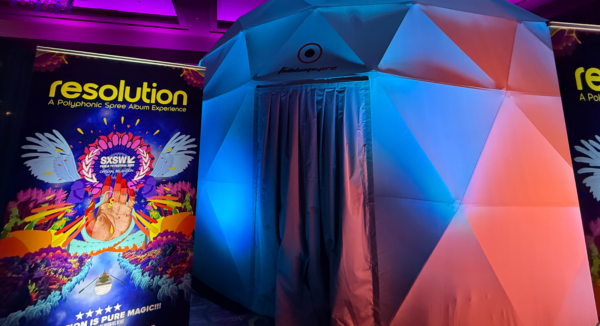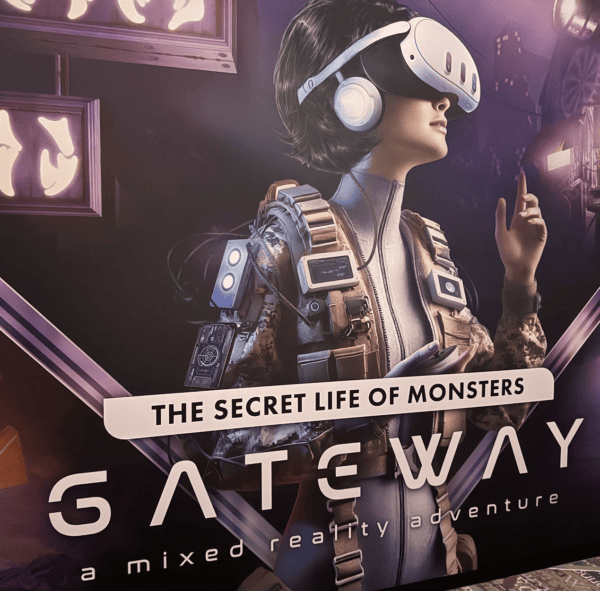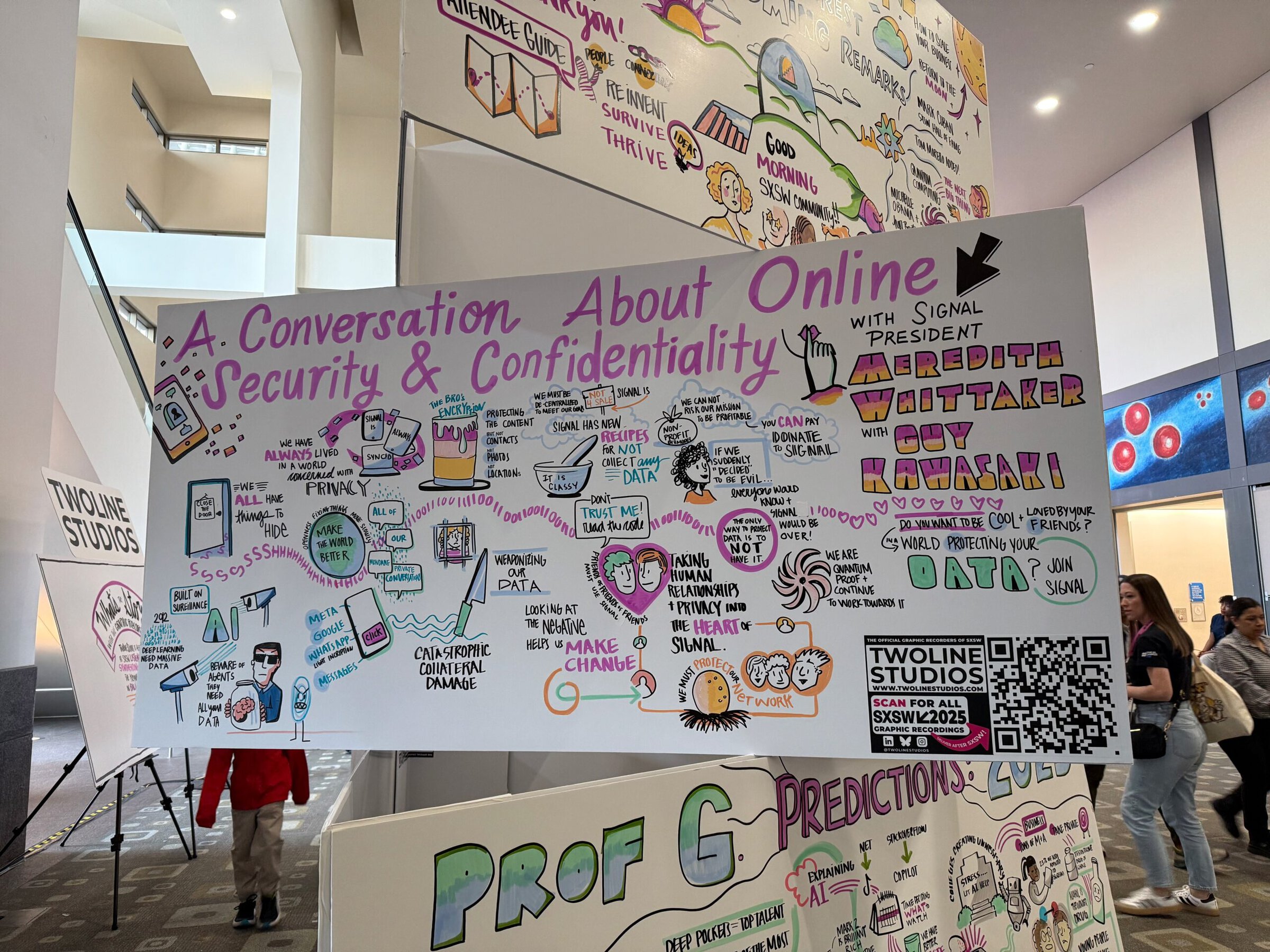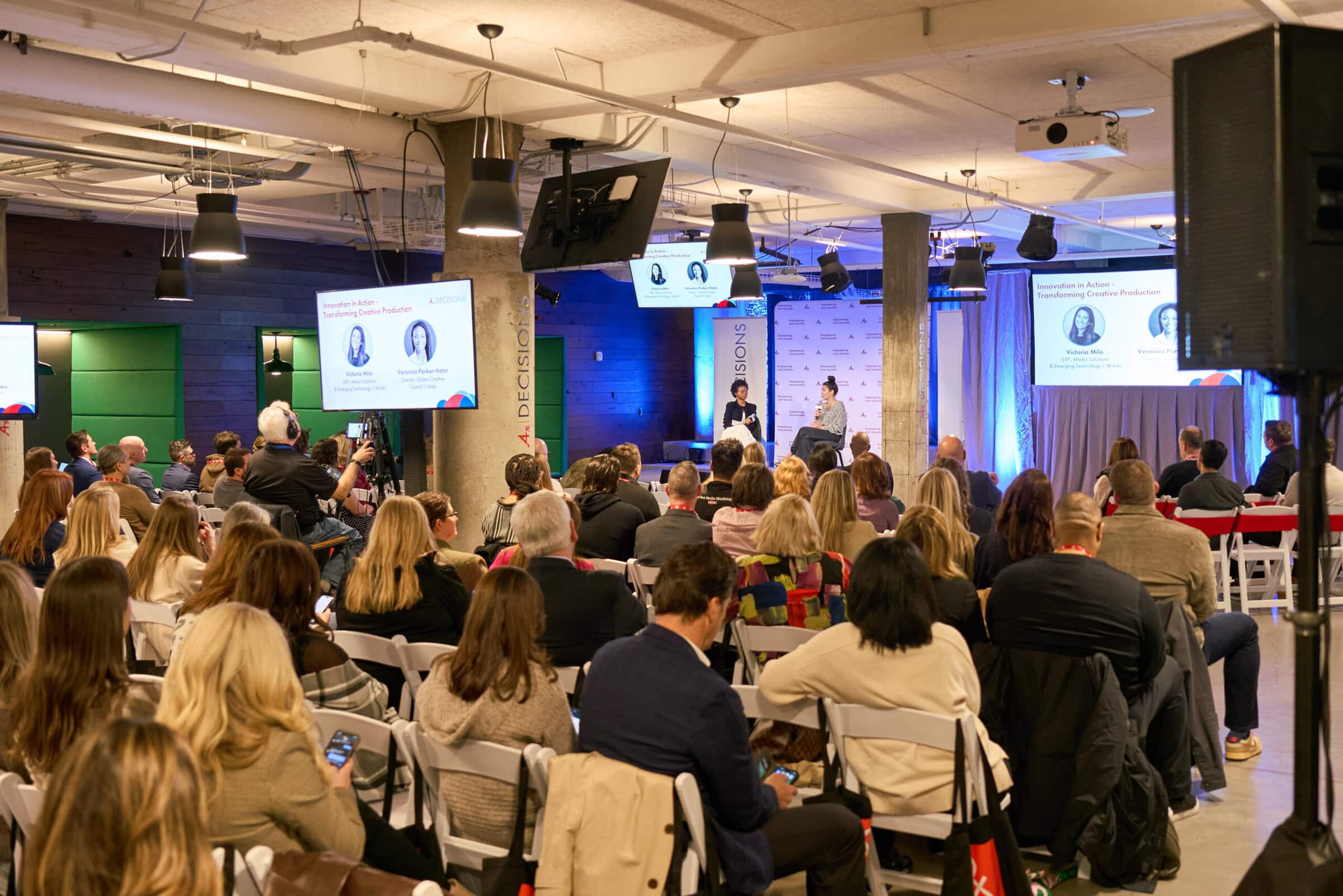Author
Jeremy Lockhorn
SVP, Creative Technologies and Innovation, 4As
Topic
- Artificial Intelligence
- CX (Customer Experience)
- Digital Advertising
- Events
- Future of the Industry
- Gaming Advertising
- Marketing
SXSW 2025 was another incredible week in Austin. The annual festival is quite different from many other events that I attend as it brings together this magical collection of misfits from diverse perspectives and diverse backgrounds who are tied together by a common thread: a passion for understanding the intersection of creativity, culture, technology and innovation.
It’s always inspiring to be there, feel the energy from the crowds, and absorb insights from a wide range of super smart people – even if you can’t get into your preferred sessions (I got aced out of a few because I couldn’t get the SXXpress pass to work and didn’t queue up early enough, but that’s all part of the experience).
While it’s incredibly challenging to boil down such a massive show into a few takeaways, here are my top three:
The Return of Immersive Storytelling

Fulldome’s mini projection dome offered a screening of an immersive film requiring no headset.
I’ll stop short of saying the metaverse is back, but after a few years of downplaying the importance of “spatial computing,” the medium returned with a bang at SXSW. There was an entire track, competition and expo hall dedicated to immersive technologies and experiences. Here, artists and filmmakers explored the use of augmented and virtual reality to reinvent storytelling and create a variety of other kinds of immersive experiences, including an echo-locator helmet worn to navigate a dark room and a stripped down Sphere-like experience in a relatively portable form factor.

The Secret Life of Monsters
The Secret Life of Monsters was one of the more popular installations, using head-mounted displays with pass-through video and micro-location awareness to send users an immersive quest.
Scale with the most advanced “spatial computing” technologies will remain a challenge until form factors improve, but web-based augmented reality requires nothing more than a modern smartphone and browser.
Agencies can take advantage of this tremendous install base to deliver impactful campaigns today while experimenting with the building blocks of immersive storytelling for tomorrow.
The Creator Economy Advances
Panels and discussions made it clear that the importance of influencers and the creator economy is only growing. Brands are shifting dollars from other channels to creator-led strategies, while also wrestling to balance IP control with creator authenticity. Creators are looking for less one-off projects and more longer-term co-creation work with brands, which could benefit both parties (more revenue security for creators and ongoing trusted partnerships for brands). In this way, creators continue to move from a distribution channel to a collaborative storytelling opportunity. Either way, agencies must continue due diligence with these types of projects, which carry similar (albeit lower scale) risk that something like an official celebrity spokesperson or a sponsored athlete presents.
Micro-influencers with small but passionate audiences and influencers from older generations like GenX and Boomers are also gaining increased attention from brands and agencies, suggesting ongoing opportunity in looking beyond the obvious.
We also seem to be reaching an inflection point with social media broadly – as the landscape fragments a bit with relatively young platforms seeking to become alternatives to TikTok, X or even Meta’s portfolio. Change is inevitable but what’s old may become new again and more curated forums vie for attention.
This part of the ecosystem will undoubtedly continue to demand attention because – done well – it allows agencies to help brands become part of culture rather than simply run ads adjacent to it. That’s not new; it has been an objective for decades – it is merely a new set of tools to accomplish a familiar end goal.
Technology Empowers Human (and Business) Evolution
Every general purpose technology has, over time, woven its way into the daily fabric of our lives. In the last 30 years or so, we’ve seen this happen with the PC, the internet in general, the intersection of smartphones/social/4G networks, and now … AI. It tends to take time for these technologies to evolve and for their full impact on life to be realized, and that impact is often unexpected, unpredictable and profound. Nearly two decades after the rise of social media platforms, we’re still learning what it means, what the risks are, and what are the long-term impacts on society. Social has done a lot of good, to be sure, but it is not without its downsides. That inherent duality with any broad technology is what is simultaneously so exciting and terrifying about the pace at which AI is advancing.
At a panel organized by Adobe and Adweek, long time industry thought leader and futurist Bonin Bough told an interesting story about how AI defeated one of the best Go players in the world. Whereas historic strategies had focused on territory, AI realized it only needed to win by 1. This shift in strategy has forever changed the game of Go, showcasing how technology can influence human strategy and perspective.
We remain in the very early stages of AI’s evolution, but it became clear earlier this year at CES that for agencies and enterprises, AI is quickly moving from experimental to practical. That evolution continued at SXSW, with lots of conversation around real-world use cases creating efficiencies and unlocking new possibilities.
The ROI picture is still fuzzy but starting to become clearer. As we’ve mentioned before in our Look Ahead report, agencies must find a way to walk two lines with AI: 1) understand what it means from an efficiency perspective, and how that translates into impact on business and pricing models, and 2) envision more fundamental transformation long-term and new opportunities for growth powered by AI. It is not easy to walk those paths simultaneously, but we believe it is one of the keys to our industry’s next phase of growth.
Visit our AI/GenAI hub for resources, guidance and training and check out Edelmans AI Landscape Report for detailed analysis on tools and use cases.

My SXSW experience this year also included a new experiment: a series of short video interviews with partners, member agencies and thought leaders. Each episode dives into what they found exciting about the show this year, and what they see coming in the next 2-3 years. For a deeper dive into key trends from SXSW 2025, I invite you to check out the full series on our YouTube channel.





